Introduction: In this article – in honor of Memorial Day – Gena Philibert-Ortega searches old newspapers to see how this special day was celebrated in 1913, the year before WWI began. Gena is a genealogist and author of the book “From the Family Kitchen.”
Memorial Day is a day to honor the fallen; those who died in military service. Its origins are rooted in the aftermath of the American Civil War, but over time the day was expanded to include those soldiers and sailors who died while serving in subsequent wars.
It’s reasonable to assume that Memorial Day was observed differently in the past than it is today. While some of that is true, today’s observances share similarities with the past. For example, most programs are held in cemeteries, and they involve decorating graves, patriotic music, and speeches.
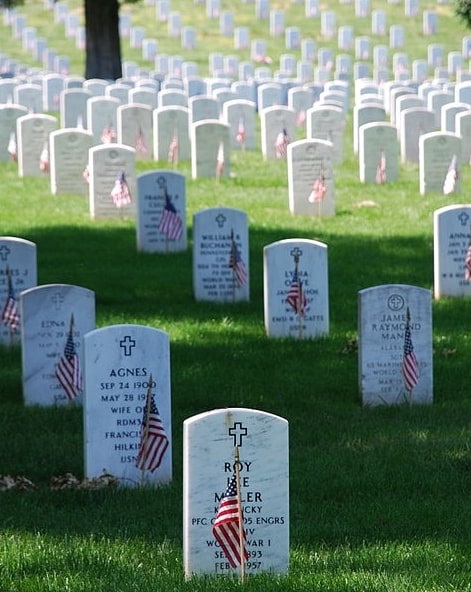
A look at historical newspapers from 1913, just one year before WWI began, gives us a glimpse of those days – and ideas for what we can incorporate into our modern-day commemorations.
Decoration Day
Memorial Day was originally known as Decoration Day. In the early 20th century it was known by and referred to in some newspapers by both names. The day became officially known as Memorial Day in 1971.*
A search in GenealogyBank’s Historical Newspaper Archives for “Decoration Day” in 1913 results in 9,194 results. “Memorial Day” in 1913 has over 14,000 results. To get a clear picture of the holiday in 1913, both terms must be used.
What are the activities that communities planned for the day? A main focus was decorating the graves of veterans, both those who died in battle and those who died after their service. As Decoration Day/Memorial Day was a day to honor the dead, I especially like this newspaper article that lists whose graves were to be decorated and who was responsible for each grave. This provides a great genealogical list that might be helpful for descendants.
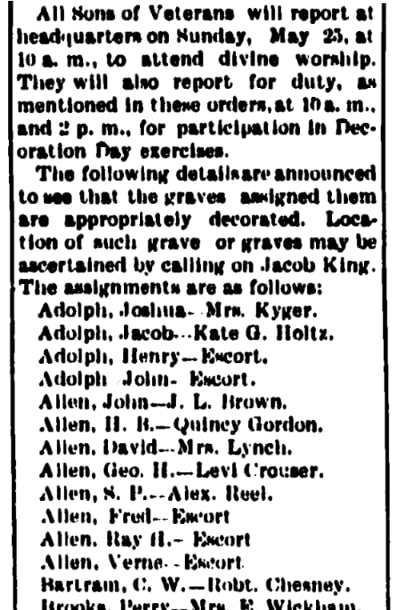
Looking through numerous newspaper articles, it’s apparent that the decorating of graves with flowers, plants, and flags extended beyond veterans and those who died in military service. In some places, it was a day to decorate and honor all of the dead as a community.
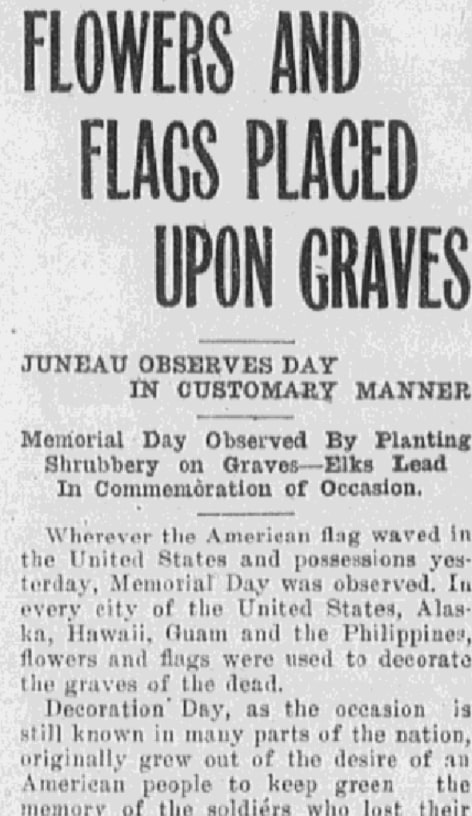
Honoring the Living and the Dead
Decoration Day/Memorial Day was observed with community programs that included grave decorating, music, speeches, and parades. This report of the activities at the national cemetery in Beaufort, South Carolina, reports that the post office and public buildings were closed. The parade was led by the Grand Army of the Republic (GAR) and The Sons of Veterans. School children decorated graves with flowers and then a program of music and speeches commenced.
(The Grand Army of the Republic was a fraternal organization for men who served in the United States military during the Civil War.)
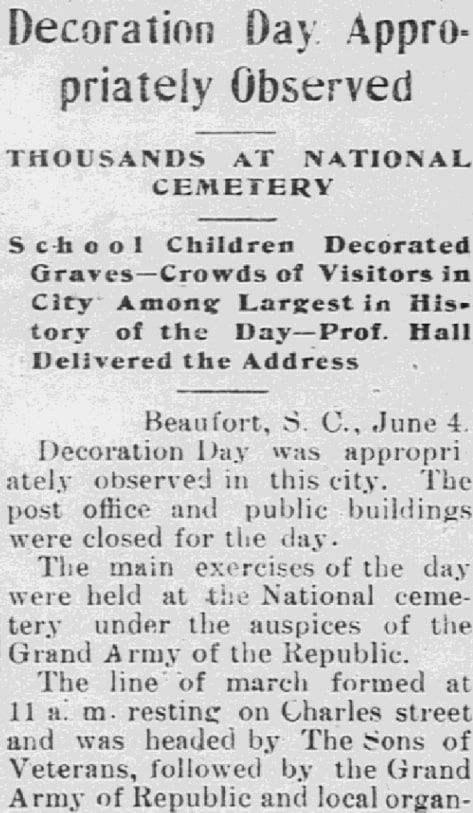
As mentioned previously, Memorial Day is the day we honor those who died in service to their country. (Veterans Day is when we honor all members of the military). But this 1913 announcement by Michigan Governor Woodbridge N. Ferris indicated that both living and dead veterans should be honored on the day.
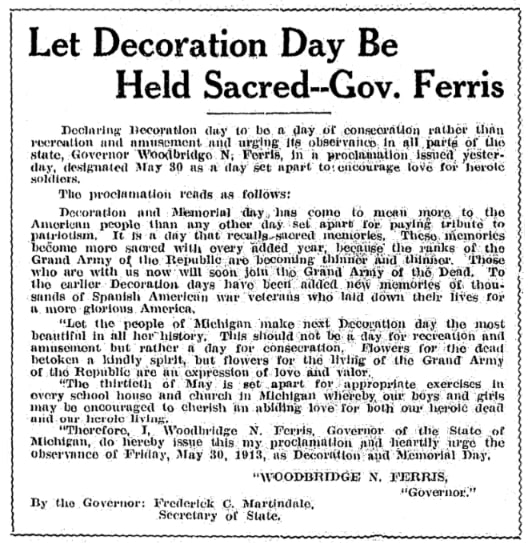
In his proclamation the governor declared:
“Let the people of Michigan make next Decoration Day the most beautiful in all her history. This should not be a day for recreation and amusement but rather a day for consecration. Flowers for the dead betoken a kindly spirit, but flowers for the living of the Grand Army of the Republic are an expression of love and valor.”
There’s little doubt that these community observations acknowledged and celebrated living veterans. Mentions of GAR members, who were getting older and fewer in number, and their stories were told – like this one, of two soldiers who continued a friendship for over 50 years.
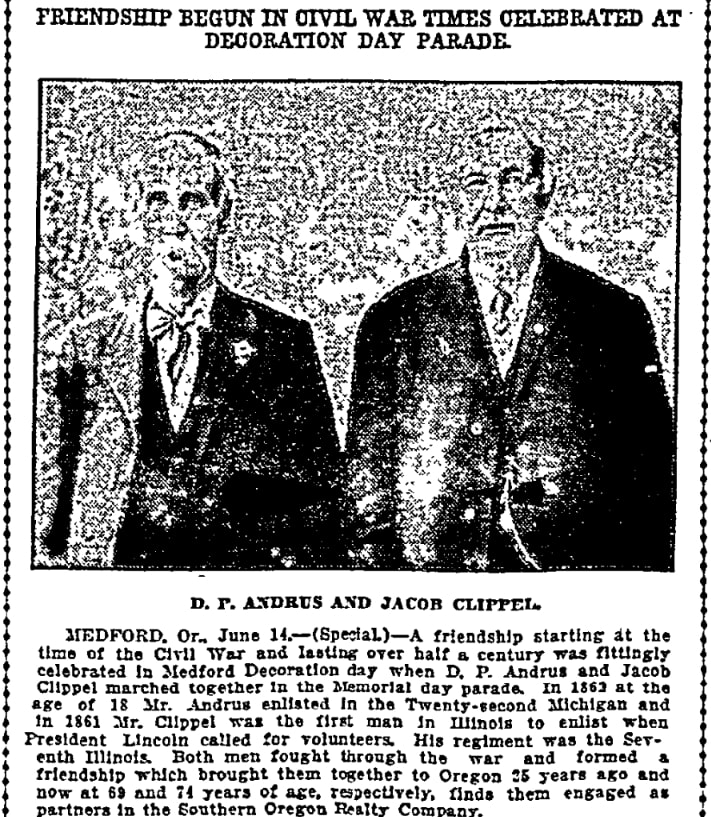
This article reported:
A friendship starting at the time of the Civil War and lasting over half a century was fittingly celebrated in Medford [Oregon} Decoration Day when D. P. Andrus and Jacob Clippel marched together in the Memorial Day parade. In 1862 at the age of 18 Mr. Andrus enlisted in the Twenty-second Michigan and in 1861 Mr. Clippel was the first man in Illinois to enlist when President Lincoln called for volunteers. His regiment was the Seventh Illinois. Both men fought through the war and formed a friendship which brought them together to Oregon 25 years ago and now at 69 and 74 years of age, respectively, finds them engaged as partners in the Southern Oregon Realty Company.
And Yes, There Were Memorial Day Sales in 1913
While Memorial Day is a more solemn observation, it has included activities like parades, picnics and even retail sales. This Rhode Island newspaper’s advertisements for Shartenberg & Robinson Co. promotes everything from men’s straw hats to women’s dresses, plants to flags. Notice that the advertisement explains they were closed on Friday, Memorial Day. The Uniform Monday Holiday Act, which took effect in 1971, not only set the name of the holiday to Memorial Day but it also changed the date of the holiday to the last Monday in May.
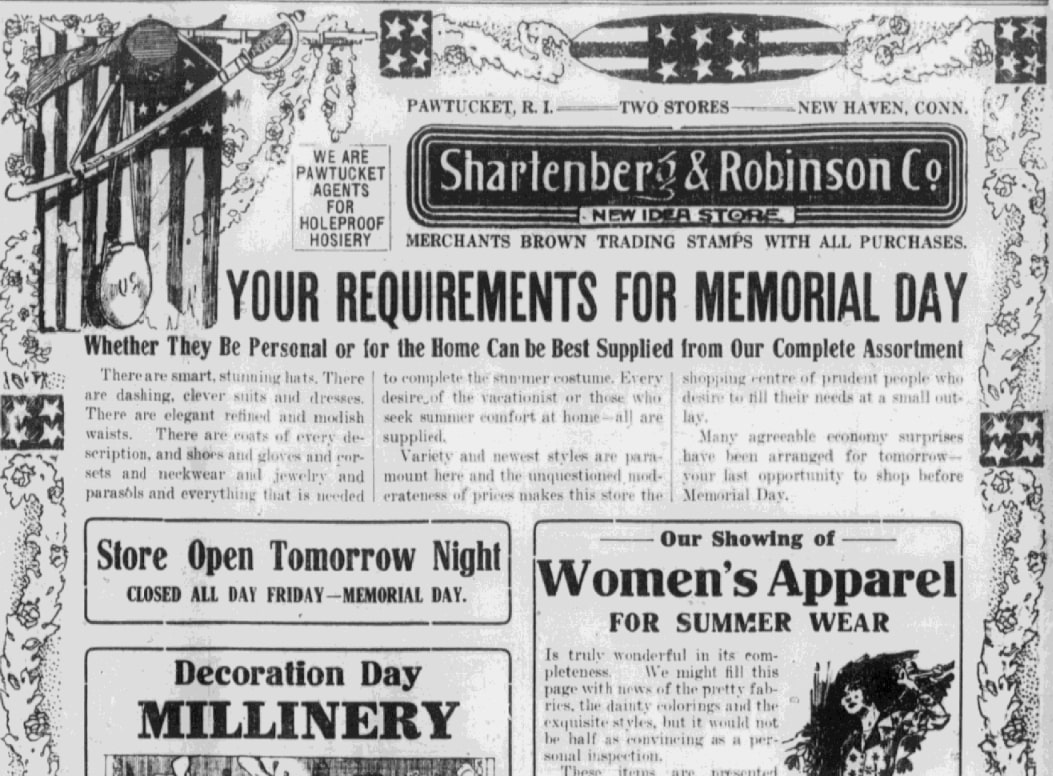
Memorial Day 2023
Memorial Day has a rich tradition of remembering those who served. It’s a day when families have visited the cemetery and the graves of loved ones. It’s a good day for us to consider those who came before us and tell their stories.
Explore over 330 years of newspapers and historical records in GenealogyBank. Discover your family story! Start a 7-Day Free Trial
Note on the header image: “Orphans decorating their fathers’ graves in Glenwood Cemetery, Philadelphia, on Decoration Day,” 1876. Credit: Library of Congress, Prints and Photographs Division.
* “How Decoration Day Became Memorial Day,” Military.com (https://www.military.com/holidays/memorial-day/how-decoration-day-became-memorial-day.html: accessed 22 May 2023).
